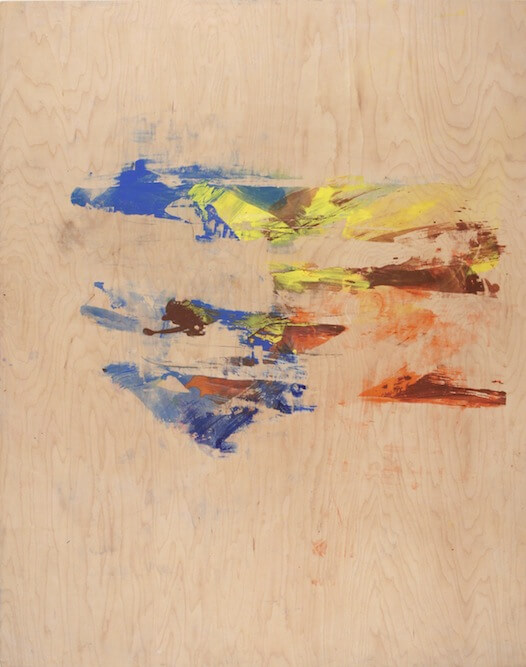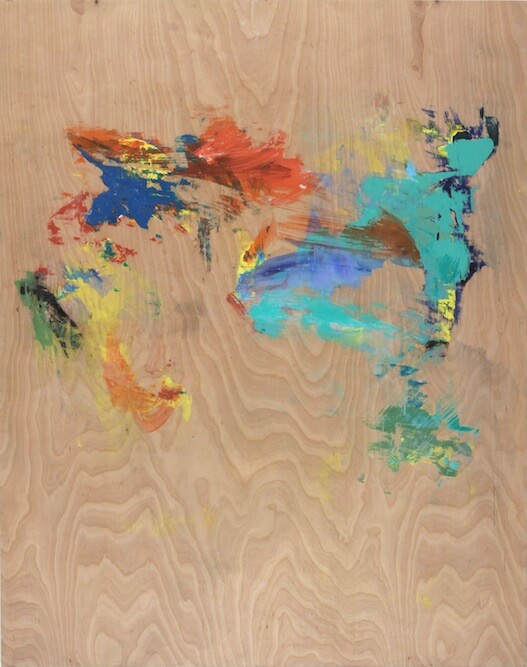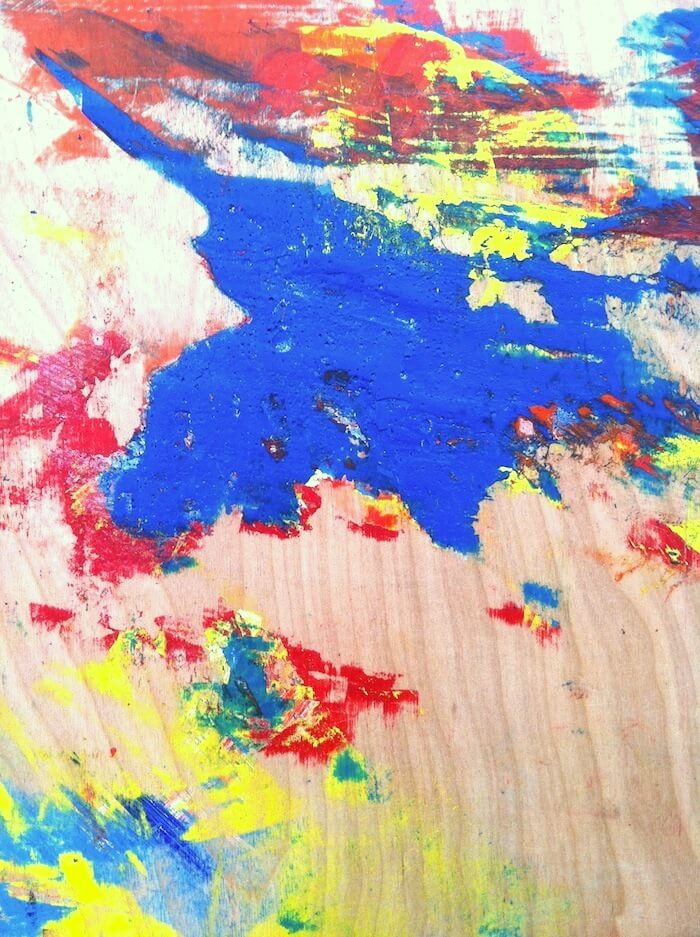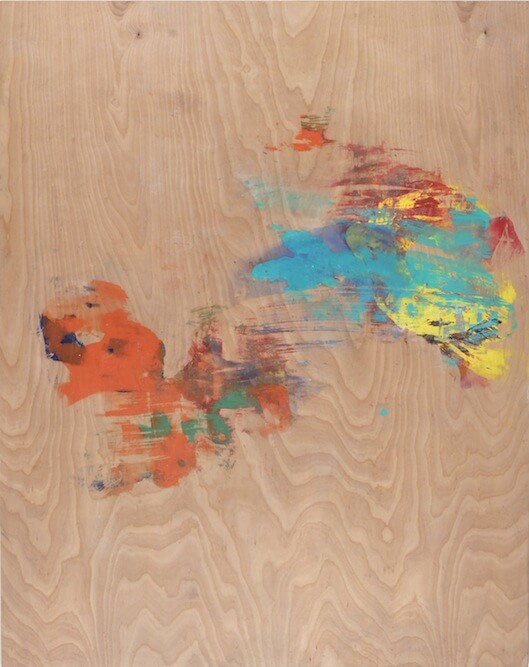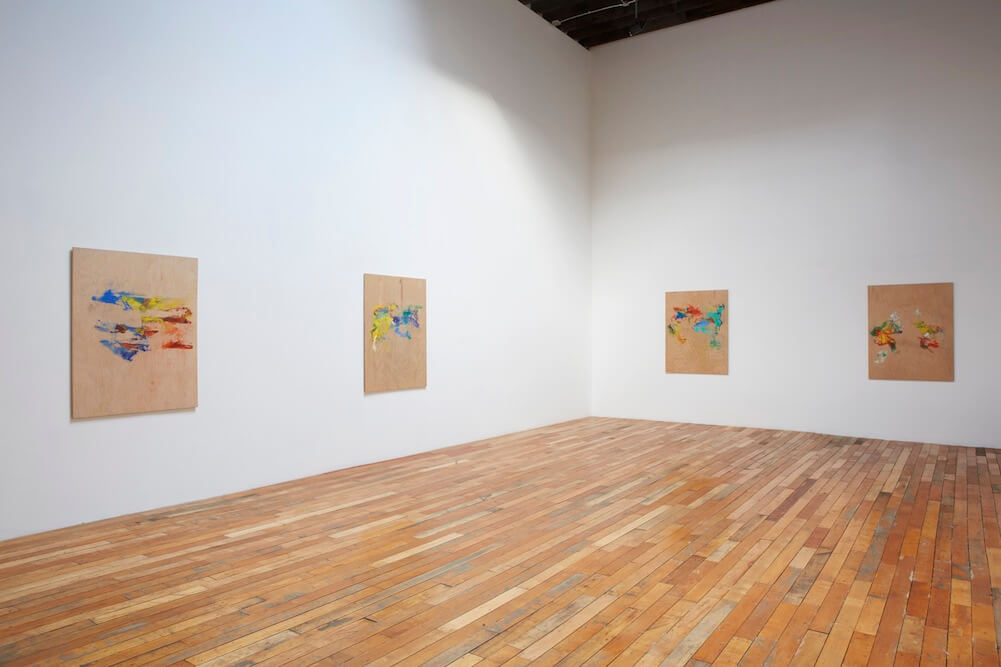“I can no longer think what I want to think. My thoughts have been replaced by moving images.” – Georges Duhamel, Scenes de la vie future, Paris, 1930 1
“We’re building Instagram to allow you to experience moments… through pictures as they happen.” – Instagram, 2012 2
In 1936, Walter Benjamin argued that the proliferation of cheap, mass-reproduced images would fundamentally change the way society consumed imagery. This sea-change in visual culture prompted Benjamin’s observation that “the manner in which human sense perception is organized, the medium in which it is accomplished, is determined not only by nature but by historical circumstances as well.” 3 For Benjamin, the rise of mass-media heralded painting’s demise and the elevation of film as the most relevant medium of expression.
Ironically, George Hoffman’s paintings, recently on view at Show Room on the Lower East Side, possess the quality Benjamin so admired in film, a unique “distracting element… primarily tactile, being based on changes of place and focus which periodically assail the spectator.” 4
Like Benjamin, Hofmann, in his recent artist statement entitled “Fractured Space,” observes a sea-change. In the 21st century, Hofmann writes, society is once again experiencing “a change in seeing… millions are looking – a lot – at constantly changing images on their TVs, computers and hand-held devices.” 5 He concludes “the world is awash in visual information… This hasn’t necessarily resulted in greater pictorial literacy, but it probably has affected the way we look at art, and the making of art.” 6
For Hofmann, the need to reassess the making of art in the digital age has not required a new medium. He remains committed to his métier – adeptly deploying painting’s strengths to reflect the temporal-visual acceleration facilitated by the internet. He accepts the challenge to paint what he calls the “unedited and torrential, pixellated, flickering, backlit, and instantaneous” nature of contemporary culture, with the realization that the rich tradition of painting is his best ally. 7
On the one hand these paintings are unabashedly Abstract Expressionist. In the vein of Joan Mitchell or Cy Twombly, Hofmann’s painted marks communicate energy, color, direction, and acceleration; they are signifiers of emotional investment. On the other hand their execution, at first glance, feels connected to the recent concept of “provisional painting”, described as “casual, dashed-off, tentative, unfinished or self-cancelling… constantly [risking] inconsequence or collapse.” 8 The tension inherent in this contradiction is compelling.
The initial appearance of provisionality, it turns out, is Hofmann’s trojan horse. Far from being off-hand, the paintings are highly considered. The entire surface of each panel is activated, and the unpainted areas are full, activated by subtle scuffs and marks. At close range the paintings are shockingly tactile, even gritty. They are a novel hybrid, painters’ paintings that take the provisionality of seeing as their subject. They examine a self-cancelling visual culture, fixing the sensation of an endless, undifferentiated stream of images.
In response to instantaneously ephemeral imagery, a painter might cope by emphasizing painting’s slowness, its strength in layering, and fixing forms in subtle relationships. He could also try to capture an image in real time by painting a literal instant. Hofmann attempts both. He applies paint with astonishing speed on dizzyingly patterned plywood surfaces. This figure/ground combination makes his paintings hard to catch up with, their marks appear to hover and vibrate. Yet the slashing, harried quality of the marks is arrested by their physical density (a surprising variety of densities), as well as their saturated color. The paintings flip continuously back and forth. Hofmann’s paintings suggests that visual disjointedness, no matter how fractured, is expressed most effectively as a continuum.
As our ability to sense individual moments is being destroyed, Hofmann paints what amounts to a collection of instants. In doing so, he creates a permanent record of awareness that subverts even as it recollects and mourns this phenomenon.
Notes
1 Georges Duhamel, “Scenes de la vie future,” Paris, 1930, quoted in Walter Benjamin, “The Work of Art in the Age of Mechanical Reproduction,” Illuminations, Schocken Books, New York, 1955, p. 238.
2 Instagram.com FAQ page, as of October 2012. http://instagram.com/about/faq/
3 Walter Benjamin, “The Work of Art in the Age of Mechanical Reproduction,” Illuminations, Schocken Books, New York, 1955. p. 222.
4 Benjamin, p. 238.
5 George Hofmann, Fractured Space, No Hassle at the Castle blog, November 21, 2010
http://paulcorio.blogspot.com/2010/11/george-hofmann-on-fractured-space.html
6 Ibid.
7 Ibid.
8 Raphael, Rubinstein, Provisional Painting, Art in America, May 4, 2009 – http://www.artinamericamagazine.com/features/provisional-painting-raphael-rubinstein/
